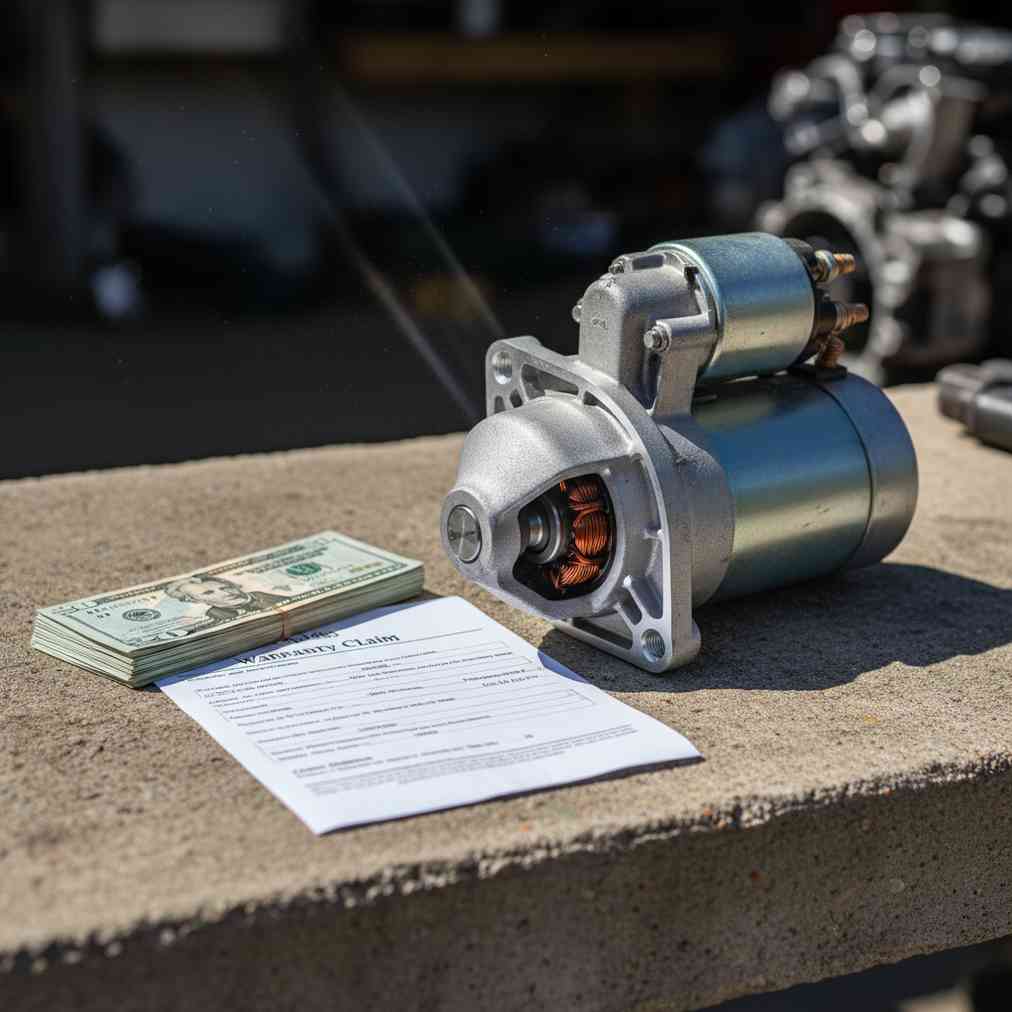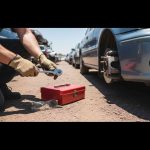Understanding Junkyard Warranty Policies
When you purchase used auto parts from salvage yards, understanding their return policies becomes crucial for protecting your investment. While policies vary significantly between different junkyards near me, there are common patterns that can help you navigate potential issues when a part fails.
Most reputable salvage yards offer a standard 30-day warranty on mechanical parts, though some extend this to 90 days or even 6 months for specific items like used engines. However, it’s important to understand that warranties typically cover only the replacement cost of the part and exclude labor charges, installation fees, towing costs, or diagnostic expenses.
Common Warranty Terms and Exclusions
Understanding what’s covered—and what’s not—can save you significant frustration and money. Here are the key aspects of typical junkyard warranties:
- Body parts, plastics, and glass are frequently sold “as-is” with no warranty
- Electrical parts often have very limited or no return policies
- Warranties are voided immediately if parts are altered, painted, or modified
- Improper installation or damage from overheating voids coverage
- Professional installation by certified mechanics may be required to maintain warranty
What Is a Core Charge?
A core charge is essentially a deposit system used throughout the auto parts industry. CORE stands for “Cash on Receipt of Exchange,” and it serves as both an environmental initiative and a business practice that benefits both salvage yards and customers.
The primary purposes of core charges include:
- Recycling and rebuilding: Ensures a steady supply of parts for remanufacturing
- Environmental responsibility: Reduces landfill waste by encouraging part returns
- Cost reduction: Helps keep used part prices lower for consumers
- Raw material recovery: Valuable metals and materials can be recycled
Typically, you’ll encounter core charges on parts like alternators, starters, water pumps, and other rebuildable parts. The charge is refunded when you return your original part, usually within 30 days, though some yards require returns within 7-10 days.
Step-by-Step Guide: When Your Part Fails
If you’ve purchased a defective part or received the wrong item, following these exact steps is crucial for a successful warranty claim or return:
| Step | Action Required | Critical Notes |
|---|---|---|
| 1. Stop Work Immediately | Cease all installation or modification attempts | Do not disassemble or alter the part—this voids warranty |
| 2. Locate Documentation | Find your original sales receipt or invoice | No claims are processed without proof of purchase |
| 3. Document the Issue | Take photos/videos of the defect or problem | Some yards require diagnostic reports from ASE-certified mechanics |
| 4. Verify Part Markings | Ensure salvage yard markings are intact | Parts must be in original condition with proper identification |
| 5. Contact the Yard | Call dedicated support number for authorization | Get RMA number or manager approval before returning |
| 6. Follow Return Procedure | Adhere strictly to their specific instructions | May require draining fluids, original packaging, or prepaid shipping |
| 7. Core Return (if applicable) | Return core within specified deadline | Core deadlines are often shorter than warranty periods |
Understanding Refund Methods and Policies
When salvage yards do offer refunds, the method often depends on your original payment method and the yard’s specific policies. Here’s what to expect:
- Cash purchases: Often refunded as store credit or company check
- Credit card payments: Usually refunded to the original card
- Check payments: May be issued as store credit
- Restocking fees: Can range from 25% to 50% if you ordered incorrectly
Many yards prefer to offer exchanges rather than cash refunds, especially for mechanical parts that fall within the warranty period. This approach helps maintain customer relationships while managing inventory turnover.
Industry Statistics and Common Practices
Based on industry data and salvage yard practices across the country, certain patterns emerge that can help you set proper expectations:
- 30-day warranties are the most common standard for mechanical parts
- 120-day extended warranties are available at some yards for additional fees
- Core return windows typically range from 10-30 days
- Major chains like LKQ Pick Your Part often have more standardized policies
- Smaller independent yards may offer more flexible, personalized service
The rise of AI and data science trends is also helping salvage yards better track inventory, predict part failure rates, and optimize their warranty policies based on historical performance data.
Best Practices for Protecting Your Purchase
To maximize your chances of successful warranty claims and returns, follow these professional recommendations:
- Inspect parts thoroughly before leaving the yard
- Keep all documentation in a safe, accessible place
- Take photos of the part’s condition upon purchase
- Understand the specific warranty terms before buying
- Ask about extended warranty options for expensive parts
- Verify compatibility with your vehicle before installation
When buying from self-service yards, remember that you’re responsible for part removal and testing. This means the warranty period often starts from your purchase date, not installation date.
Special Considerations for Different Part Types
Different categories of auto parts have varying warranty expectations and failure rates:
Mechanical Parts: Engines, transmissions, and differentials typically carry the longest warranties but also the strictest installation requirements. Many yards require professional installation to maintain warranty coverage.
Electrical Parts: Often sold with minimal or no warranty due to their sensitive nature and difficulty in testing. Items like used AC compressors fall into this category.
Body Parts: Typically sold “as-is” since condition is visually apparent. However, some yards may accept returns for incorrect fitment if the error was on their part.
When to Consider Professional Help
For expensive or complex parts, consider having a professional mechanic inspect the part before installation. This can help you:
- Identify potential issues before installation
- Maintain warranty coverage through proper installation
- Get documentation for warranty claims if needed
- Avoid costly diagnostic fees later
Some salvage yards maintain relationships with local mechanics who are familiar with their warranty policies and can provide the necessary documentation for claims.
The Future of Salvage Yard Warranties
As the automotive industry evolves, particularly with the rise of electric vehicles, salvage yard warranty policies are adapting. Machine learning projects are helping yards better predict part reliability and adjust warranty terms accordingly.
Modern salvage yards are increasingly using technology to track part performance, customer satisfaction, and failure rates. This data-driven approach is leading to more accurate warranty periods and better customer protection.
Making the Most of Your Salvage Yard Experience
Understanding return policies is just one aspect of successful salvage yard shopping. Whether you’re looking for reliable used alternators or planning to sell your junk car for cash, knowledge of warranty terms and return procedures will serve you well.
Remember that salvage yards are businesses that want satisfied customers. Most reputable yards will work with you to resolve legitimate issues, especially if you follow their procedures and maintain proper documentation. By understanding these policies upfront, you can shop with confidence and protect your investment in used auto parts.
The key to success lies in preparation, documentation, and communication. Whether you’re dealing with a large chain or a local family-owned yard, these principles will help ensure a positive outcome when issues arise with your purchased parts.





Leave a Reply
You must be logged in to post a comment.